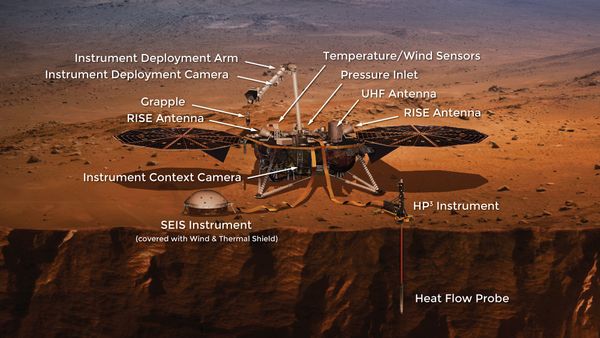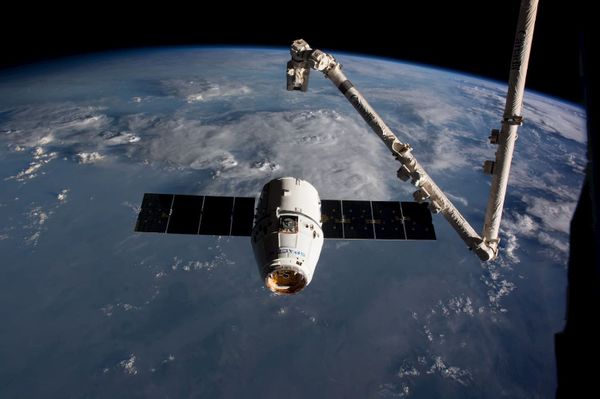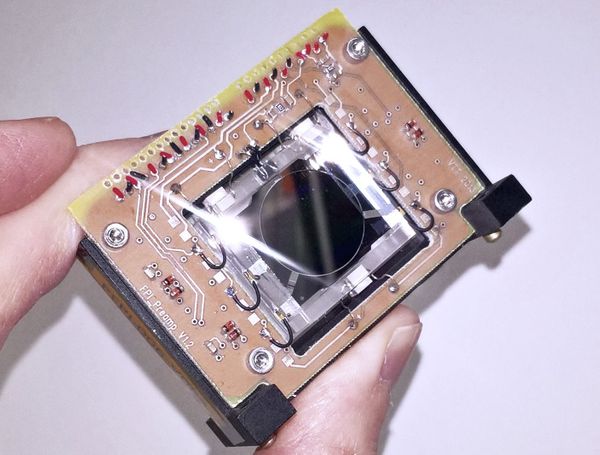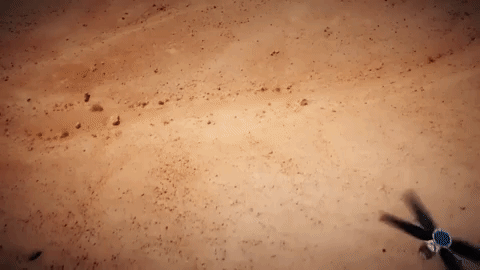On September 17th, 2018, Elon Musk took the stage to announce that Yusaku Maezawa, Japanese billionaire entrepreneur and art collector, had purchased a flight of the BFR rocket around the Moon, scheduled for 2023. The presentation included an update on the BFR rocket design, as well as the announcement of #dearMoon, a project to send artists along for the ride, to inspire art from a perspective only 24 humans have ever experienced. SPEXcast will have its full thoughts in a new episode airing on Monday, but read on to learn all about this ambitious plan and the engineering needed to make it happen.
Dear Moon, with love
BFR is designed to send up to 100 people to the Moon, Mars, and beyond. Sending just a single passenger for a trip around the Moon might be seen as a wasted opportunity. The initiative, #dearMoon, will send painters, photographers, musicians, film directors, fashion designers, architects, dancers, novelists, and sculptors to the Moon to "inspire the dreamer within each of us".
Artists on a mission
The flight will be the first time humans have returned to the Moon since 1972 and it is a huge opportunity to inspire people like the Apollo program did. It may seem strange to be sending artists out into space, which has historically been taken up by pilots, engineers, and scientists. However, artists are trained and talented at capturing and visualizing experiences in creative ways. We have satellites orbiting the Moon right now, capable of sending back high resolution images of the Moon, but these artists represent the human element reaching out to the Moon. A dozen perspectives and interpretations of the experience will be invaluable, and will allow everyone on Earth to connect uniquely to the experience.
These kinds of inspirational trips are not unheard of. Chris Hadfield hosted an arctic exploration trip in 2016 as part of Generator Arctic.
"Astronaut Chris Hadfield is traversing the Arctic Ocean with scientists, photographers, writers, musicians, and videographers to capture a unique experience unlike ever before. From the south of Greenland to northern Resolute, Generator Arctic sets out to create a multimedia imprint of a rare time and space, seen through eyes who have never been exposed to it before."
Who is Yusaku Maezawa
Hanging out with @yousuck2020 before the @SpaceX moon mission announcement pic.twitter.com/RTOwutzMtG
— Elon Musk (@elonmusk) September 18, 2018
According to wikipedia, Yusaku Maezawa is a Japanese billionaire entrepreneur and art collector who founded Start Today in 1998 and launched the online fashion retail website Zozotown. With a net worth of more than $3 billion and a passion for art curation, Maezawa looks to be the ideal fit for a mission like #dearMoon. In the post-conference Q&A Maezawa was confirmed to be the mysterious passenger of Grey Dragon, the precursor to #dearMoon which would have used a SpaceX Falcon Heavy and Crew Dragon to send Maezawa and a single artist towards the Moon. Also Maezawa had bought out the whole flight of the BFR to the Moon, so each artist participating will fly for free.
Maezawa will be the first non-American citizen to travel to the Moon, and his group of artists will likely be multinational. During the Q&A, a Japanese reported asked why Elon and SpaceX chose a Japanese citizen to fly first on BFR and Elon was quick to clarify that Maezawa chose them. This is in stark contrast to current NASA messaging, highlighting the Commercial Crew program which will return American astronauts to the ISS on American rockets and capsules launched from American soil. Overall, #dearMoon seems to mark the transition from national space programs launching their own citizens to a private space program launching people, regardless of national origin.
Paving the way for future space travel
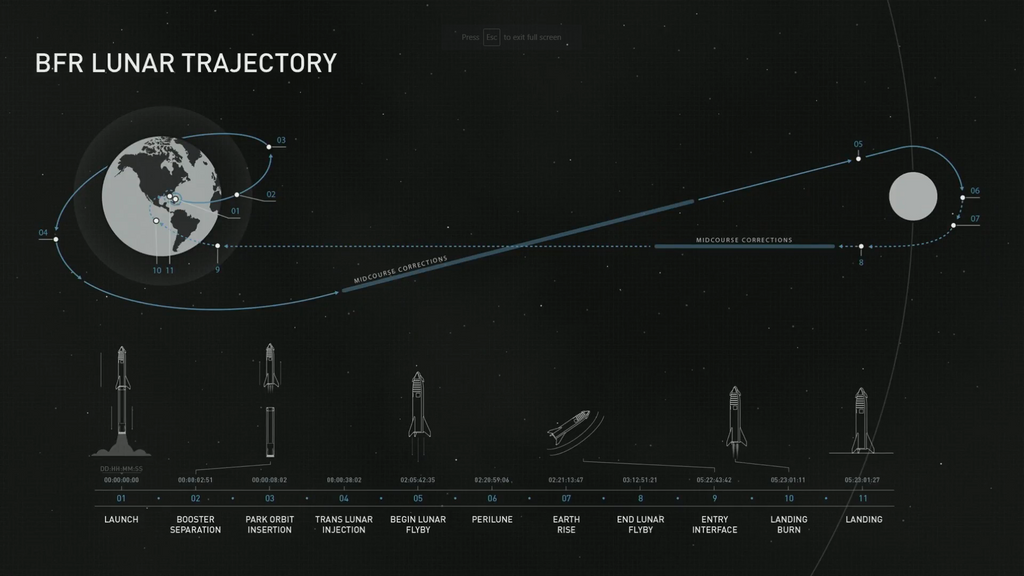
dearMoon passengers would fly past the Moon, 55 years after Apollo 8. Elon mentioned the possibility of a low lunar pass and an apoapsis far past the Moon, giving passengers up close views as well as the perspective of the Moon and Earth as tiny specks in the void of space.
Space tourism is not a new concept. Millionaires and billionaires have paid Space Adventures to fly to the International Space Station aboard Soyuz spacecraft for many years, and companies like Virgin Galactic and Blue Origin hope to send customers on suborbital trajectories for hundreds of thousands of dollars. It can seem like space tourism is only an expensive hobby for the ultra rich. According to Elon Musk, the down payment Maezawa had made for his BFR flight would "materially affect the development of BFR" estimated to cost roughly $5 billion in total. That means #dearMoon is not just a publicity stunt or an artistic inspiration voyage, but will help lay the groundwork for cheaper follow up flights in the future. Elon reiterated that BFR is designed for use throughout the solar system, including landing on Mars, the Moon, and beyond. The ticket price for Maezawa will help fund the prototypes, factories, and first reusable BFR to enable lunar missions.
BFR Design Changes
A comparison of the 2017 vs 2018 #SpaceX #BFR / #BFS renderings#dearMoon #MoonPassenger #Maezawa #Moon pic.twitter.com/9is1uTN3fE
— OLHZN Space Balloons (@OLHZN) September 18, 2018
Before the big unveil of the first passenger, Elon Musk shared updates to the design of BFR and BFS. Since Fall 2017, the whole rocket has stretched from 106m to 118m, with the spaceship section growing from 48m to 55m and a payload to LEO of 100mt. This means the total pressurized volume is now over 1000 m^3 with 80 m^3 of storage available in rear cargo pods. While these size changes are meaningful, the new BFS design features several striking changes.
Actuated Fins
The biggest change to the vehicle is the addition of a third 'fin' on the vehicle as well as forward actuated fins. These changes support the new re-entry profile for BFS, which is almost perpendicular to the direction of motion, in order to maximize aerodynamic drag and reduce the fuel needed for a retro propulsive landing. The landing legs have been moved from alongside the barrel hull section to pistons inside the edge of each fin. Elon Musk specifically pointed out that the dorsal fin is not aerodynamically significant, since it is above the hull during re-entry. It really is a glorified landing leg post and is symmetrical with the other fins. The two side fins now move dynamically on large hinges during re-entry to aid in positioning the rocket as it descends.
Standardized Sea-level Raptor Engines
Raptor is a beast! #SpaceX pic.twitter.com/jkFZssTKyr
— Michael Baylor (@nextspaceflight) September 18, 2018
Flight-scale testing of Raptor is underway
A very noticable change to the rear of the vehicle is the reorganization of the Raptor engines. Raptor was reconfirmed to have 200mt of thrust at 300 bar of chamber pressure and a ballpark specific impulse (Isp) figure of 380s with a high-expansion ratio nozzle. However, it is likely to fly with a lower specific impulse since SpaceX will use a common engine across the first and second stages of BFR. This means BFS will be less efficient due to the low expansion ratio in a vacuum, but the choice has several benefits. Since all seven engines are exactly the same, BFS has single engine out across the entire flight profile. Elon mentioned BFS could probably handle two engines disabled through most of flight. He also said several sections of the flight profile could sustain four engine out failures, since only three Raptors are needed for landing.
Designing and testing vacuum-optimized rocket engines is a difficult task. Testing the rocket engines without their expansion nozzles does not always provide an accurate test of the engine's performance, and testing large vacuum engines in vacuum chambers is expensive and difficult. Focusing on sea-level Raptor production enables economies of scale as each BFR system requires thirty-eight identical engines. This becomes even more important when each BFR can be reused hundreds of times. Engine assembly lines are expensive and need to be utilized or the capability to build engines can be lost.
Perpendicular re-entry profile
Simulation of BFR performing a reentry. (1/2) #SpaceX pic.twitter.com/t5KjXSJxxj
— Michael Baylor (@nextspaceflight) September 18, 2018
Dynamic aerodynamic surfaces and forward canards allow for a near perpendicular angle of attack to the direction of motion.
BFS now features one of the most dramatic re-entry profiles for a crewed vehicle. Current Falcon 9 booster cores fly mostly engines first during descent, using grid fins to increase the angle of attack of the booster cylinder to increase drag and save propellant. BFS takes that concept to the extreme. The new aerodynamic surfaces allow it to 'fall like a parachute jumper' with almost a perpendicular angle to the direction of motion. Near the end of descent, BFS pitches backward so the Raptor engines can propulsively land the stage.
Utilizing aerodynamic drag where available saves fuel, but increases the risk of landing considerably. If aerodynmic surfaces fail, it can have catastrophic results.
Rear Cargo Pods
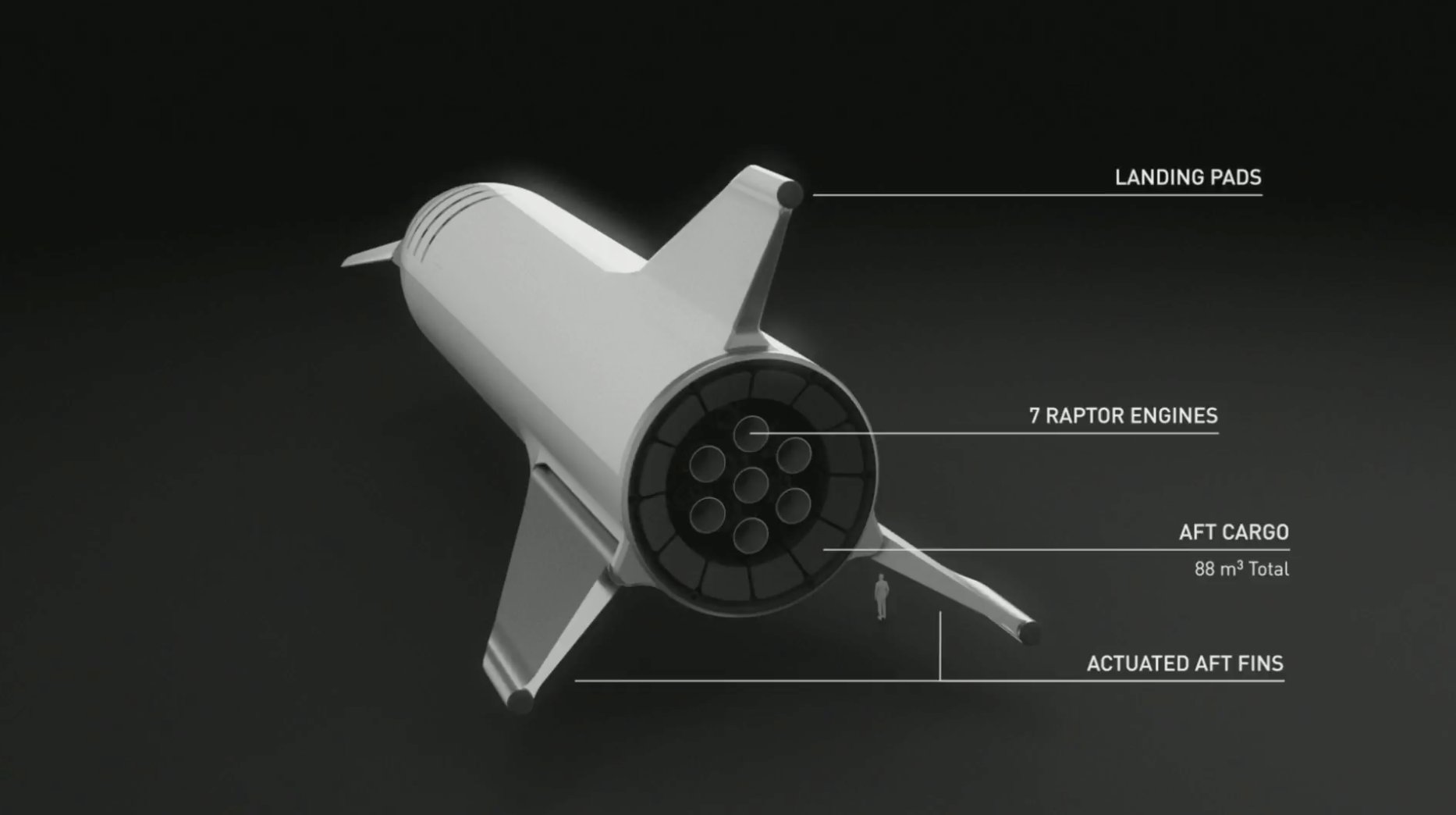
Smaller Raptor nozzles allow for up to 88 m^3 of cargo space to be located close to the landing surface, negating the need for tall cargo cranes.
One of the most visually intriguing changes teased was the rear engine compartment, which featured 12 segmented sections in a ring around the vehicle. Elon confirmed these are cargo canisters for unpressurized cargo.
The Small Things
BFS continues to be shown with beautiful, sweeping solar arrays, but renders and CAD models don't feature practical stowage or deployment of these arrays from the vehicle.
The new design also features the return of the expansive forward facing window, which would provide breathtaking views of Mars and the Moon. According to Elon, the interior design has not been finalized, and could change based on the destination. A sight-seeing mission around the Moon can focus on common spaces and areas to do "the most fun thing you could possibly do in space" while a three to six month journey to Mars could provide private work spaces and other utilitarian amenities.
During the Q&A, Elon spoke on the challenges of providing life support to crews on deep space missions. Current systems on Crew Dragon and the ISS are partially open loop, losing some resources to the environment over time. For LEO space stations and short duration crew travel, this is not a huge issue, since more consumables like oxygen and water can be supplied to keep the system functioning. For longer trips to the Moon, Mars, and beyond, a closed-loop system that minimizes losses is required.
The Second Step
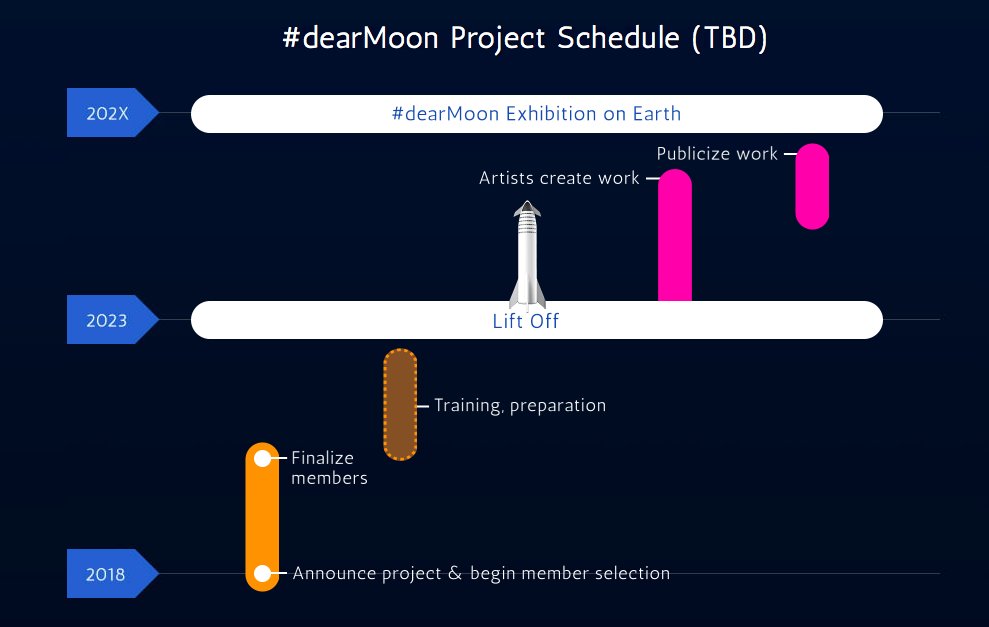
While passengers will train shortly before the 2023 launch date, extensive prototyping, suborbital and orbital testing will need to be done before humans first fly on BFR
During the Q&A, the New York Times brought up the fact that "In the past three years, we have seen three designs for this rocket. This mission is in five years." Our major takeaway from the event was that while designs and the featured destination have changed, this presentation marks the second step on the path towards BFR taking flight. Elon estimated the budget for BFR development to be roughly $5 billion, with lower and upper bounds set at $2 billion to $10 billion. This is an incomprehensible amount of money for the average person to comprehend, but relative to other space development projects, it is very cost effective. The Apollo Program cost roughly $200 billion over its development and operations period, with eight crewed flights to the Moon and six successful landings. More modern space development projects like Orion and SLS dwarf the projected costs of BFR. For context, SLS is estimated to cost $1.5 to $2.5 billion per launch. Two SLS flights could fund the development and delivery of a fully reusable rocket system with more capability than SLS with much lower operational costs.
'Bent metal'
That’s the first BFR airframe/tank barrel section made of a new carbon fiber material
— Elon Musk (@elonmusk) September 18, 2018
BFR development and prototype hardware was featured throughout the presentation. We reported on the first piece of BFR tooling delivered to the Los Angeles factory ealier this year. While the majority of BFR will consist of carbon composite structures, seeing 'bent metal' for the project is a good sign. The transition from 12m to 9m between IAC 2016 and 2017 was a jarring change. However these tank sections and tooling are a physical investment and vote of confidence in the current design choice. Elon reiterated the late 2019 timeline for suborbital hops from Boca Chica for a BFS prototype. Airframe sections like the one featured will soon come together into a rocket body if SpaceX plans to meet that deadline.
Additional Raptor test footage and the decision to standardize on a single nozzle diameter is another positive sign. BFS will only need three working Raptors for initial test flights. Grasshopper featured a single Merlin engine. Full size engines on the stand represent increasing confidence in the Raptor design.
The first deposit towards Mars
The single largest outstanding question for BFR has been funding. How will SpaceX pay for this ambition project? Its prior development projects, Falcon 9 and Dragon, were partially funded by NASA development contracts. After IAC 2016, it appeared unlikely that NASA would seek to fund ITS development like it had for Falcon. Elon clarified that only 5% of the SpaceX workforce and resources were currently working on BFR. That is less than 400 people out of a company of more than 7000 employees. The down payment for #dearMoon represents a large, outside financial commitment to the success of BFR. While a single lunar flyby will not get people living and working on Mars, funding the development and infrastructure for future BFR flights represents a step towards more humans living and working in space.
SPEXcast Breaks down BFR 2018
Check back here next Monday for a new episode of SPEXcast, where we dive into every announcement from today's event and give you our critical analysis.





